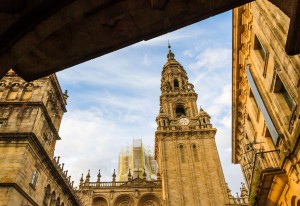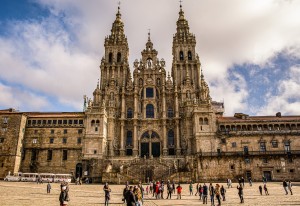Considering Pilgrim Saturation:
March emerges as an intriguing month for embarking on the Camino de Santiago. Although it doesn’t reach the popularity of summer months, the influx of pilgrims begins to stir. The advantage is clear: the route is not as saturated as during the peak season. However, it is wise to anticipate that hostels and services may experience an increase in pilgrim numbers compared to less crowded months.
Variable March Weather:
In this month, the weather on the Camino de Santiago can be unpredictable. While some days may offer pleasant temperatures, others may bring rain and coolness. The key is to prepare adequately with suitable rain gear and layers for temperature changes. Additionally, variable weather can affect trail conditions, requiring careful planning and appropriate footwear.
Evaluating the Pilgrimage Experience:
Despite potential complications, March presents a unique opportunity for those seeking a quieter experience. The atmosphere is less bustling, allowing for a deeper connection with the nature and spirituality of the Camino. Encounters with fellow pilgrims become more meaningful, fostering camaraderie in a less crowded environment.
Strategic Planning:
While March offers a more peaceful experience, strategic planning is essential. Hostel availability may be limited, especially in more popular sections. Booking in advance and adapting to weather conditions are crucial aspects. Additionally, choosing less-traveled routes can be a smart tactic to avoid crowds and enjoy a more intimate experience.
Conclusion: Is March the Right Time?
Ultimately, the decision to walk the Camino de Santiago in March depends on individual preferences. If tranquility is valued, and one is willing to face weather variables, March can offer an authentic and less saturated pilgrim experience. However, careful planning is essential to maximize the journey. Those seeking to escape crowds and are prepared for weather challenges may discover that March is the ideal month to undertake this unique pilgrimage.












